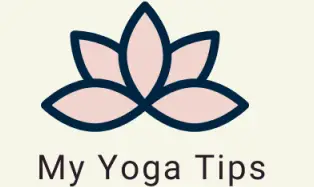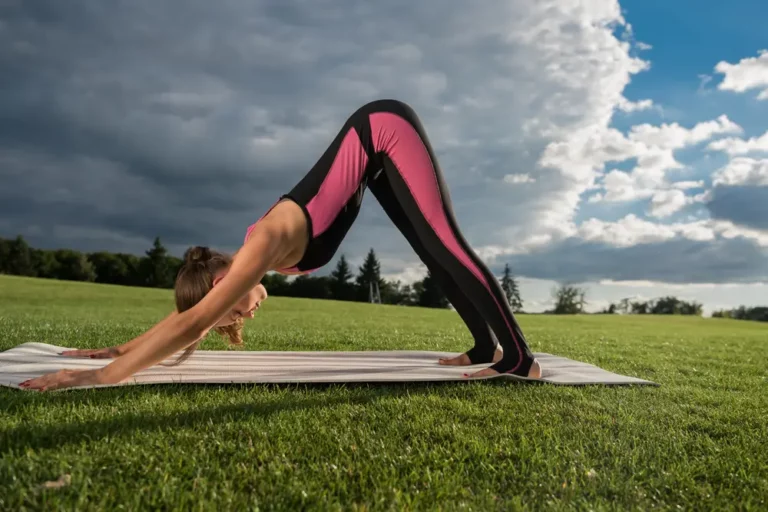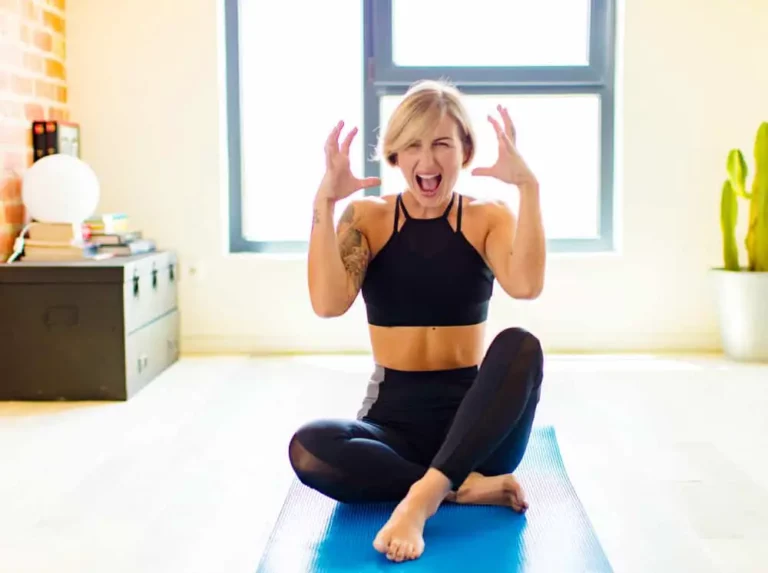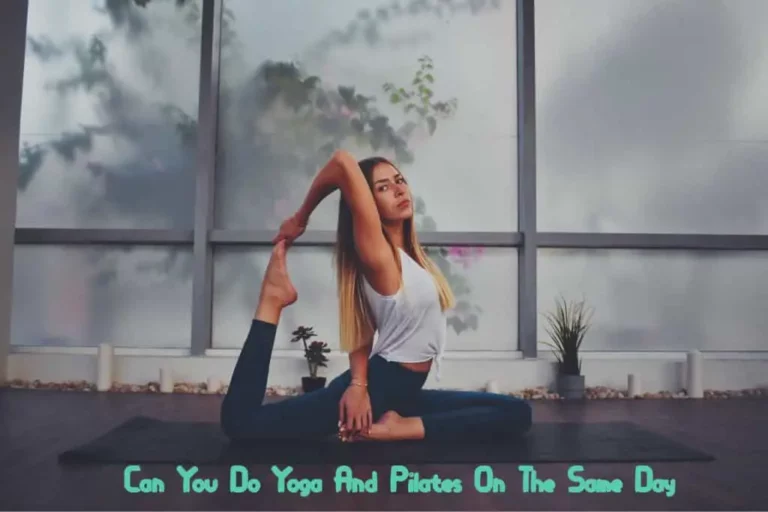Meditation and Yoga Equals Mindful Yoga

Meditation and yoga both originate from India, supported by ancient Sanskrit text in the Rig Veda. Some people often think that yoga and meditation are the same thing, and while they hold similarities, they are inherently different.
Meditation, in essence, is a practice that guides you to become aware of your thoughts and the workings of your mind. Yoga is an ancient spiritual practice that consists of specific poses and controlled breathing but has also become a modern form of exercise. Meditation forms part of yoga.
Yoga and meditation have a combined practice called Yoga Meditation, or Mindful/Mindfulness Yoga. We’ll explore combining yoga and meditation, how to practice them in a single approach, and their similarities and differences.
Meditation And Yoga Explained
Meditation has many forms but essentially consists of sitting in silence, observing your thoughts, and watching your breath. Meditation helps you connect with the inner workings of your mind and feelings, helping to improve your conscious awareness.
Yoga consists of specific postures called Asanas and concentrated breathwork called Pranayama, but there are six other aspects called “limbs” that you can add to the practice. Yoga brings synchronization between mind and body. So, is yoga meditation or exercise? Yoga is defined as an exercise, but it does affect the mind, giving it a meditative ability.
In short, meditation is cognitive, and yoga is physical, but they have qualities that overlap, and there is a yoga practice that combines the two.
Meditation Plus Yoga Equals Mindful Yoga!
Mindfulness means giving awareness to the present moment to experience it fully, and it is a type of meditation. Yoga aims to keep one in tune with their body during exercise, making mindfulness an essential part of the practice. Since that is the case, yoga already contains an element of meditation; however, there is a yoga subdivision that focuses on meditation specifically, called MindfulYoga.
MindfulYoga harnesses Buddhist Mindfulness teachings and applies them to simple yoga poses. It differs from regular yoga because the emphasis is not central to body alignment but instead on finding harmony between your mind and body and observing physical sensations.
How To Practice Mindful Yoga:
- You can close your eyes during poses to facilitate meditation.
- Remain open to the physical sensations you feel while holding a pose.
- Notice where your body holds tension. You can try body scanning each part of your body.
- Take your time with the poses. There’s no need to rush!
- Notice your thoughts when you change postures.
- Watch your thoughts without attachment or judgment.
- It is more than okay for your mind to wander, but remember to gently bring your attention back to your body and breath to stay present. You can use a mantra to refocus too.
- Remember, there’s no perfect way to do Mindful Yoga. The only point is to practice living in the present moment without judging yourself.
10 Best Mindful Yoga Poses
You can devise your own easy-to-remember yoga routine so that all the attention can remain on meditation. These are some easy yoga poses you can add to your flow!
- Mountain Pose “Tadasana”: A firm standing pose with relaxed arms and shoulders.
2. Standing Forward Fold “Uttanasana”: You fold your chest to your legs from your hips with arms extended to the ground and slightly bend your knees.
3. Standing Half Forward Fold “Ardha Uttanasana”: Fold your body forward with the spine straight at the hips, your chest slightly lifted, resting your hands below your knees, and gaze ahead.
4. Tree Pose “Vrikshasana”: Stand on one leg with the other bent, placing your foot on your upper thigh, hands held to your heart.
5. High Plank “Phalakasana”: A pushup position with arms kept extended.
6. Upward-Facing Dog “Urdhva Mukha Shvanasana”: On the floor, keep the front part of your body up with your arms and chest straight and your legs extended behind you.
7. Downward Dog “Adho Mukha Shvanasana”: Start on all fours and extend your hips and glutes into the air, lengthening the spine so your body forms a ‘V’ shape.
8. Low Lunge “Anjaneyasana”: Put your foot forward in the center of your body, and lower your other knee to the floor, sliding your foot back until you feel your hip and thigh stretch.
9. Upward Salute “Urdhva Hastasana”: Stand tall with your feet together, lengthening your spine, reach both arms to the sky, and hold the pose.
10. Corpse Pose “Shavasana”: Lay on your back, separating your legs and slightly parting your arms from your torso. This is the perfect relaxation pose to end your practice and facilitate meditation!
Yoga And Meditation Difference
Yoga and meditation cultivate different parts of your being. Yoga, on its own, focuses on becoming one with your physical body, while meditation centers around training the mind to become aware of itself without judgment. There are plenty of similarities within each practice, but noticeable differences too.
The Similarities
- Inner Awareness – both practices encourage you to explore your self-awareness.
- Focus and Concentration – Yoga and meditation rely on your concentration to work, which is why it’s a practice! Both teach you to concentrate and be more mindful in everyday life too.
- Breathing – Meditation and yoga rely on your breath to bring you into focus and ease the mind.
- Better Sleep – Doing either one or both practices does wonders for your nightly slumber.
- Stress Relief – Both practices are widely known to help you manage stress and find relaxation.
- Improved Mental Well-Being – Once you get in touch with your mind and body, you’ll notice a mental shift toward a happier self.
- Spirituality: Yoga and meditation have deep spiritual roots and have helped many people find spiritual solace.
The Differences
- Physical and Mental Focus – Yoga is physical, and meditation is cognitive.
- Movement and Stillness – Yoga is an exercise that can be quite physically demanding, while pure meditation requires you to remain still and focused.
- Fundamental Benefits – Meditation is mainly attributed to helping with mental well-being, while yoga expands your flexibility, balance, and strength.
- Breathing Control –Yoga requires you to control your breath. In meditation, you notice it rather than control it.
Learn more!!!! Yoga Vs. Meditation: Is One Better Than The Other? and Can You Do Yoga Without The Spirituality Aspect?
Wrap Up
Meditation and yoga are cut from the same cloth, which is why they share plenty of similarities, but they are different practices, yoga being physical and meditation being cognitive. Yoga has meditative roots but doesn’t train the mind like meditation. Combining both practices is called Mindful Yoga, encompassing Buddhist mindfulness principles, which is truly unique and worth a try!






